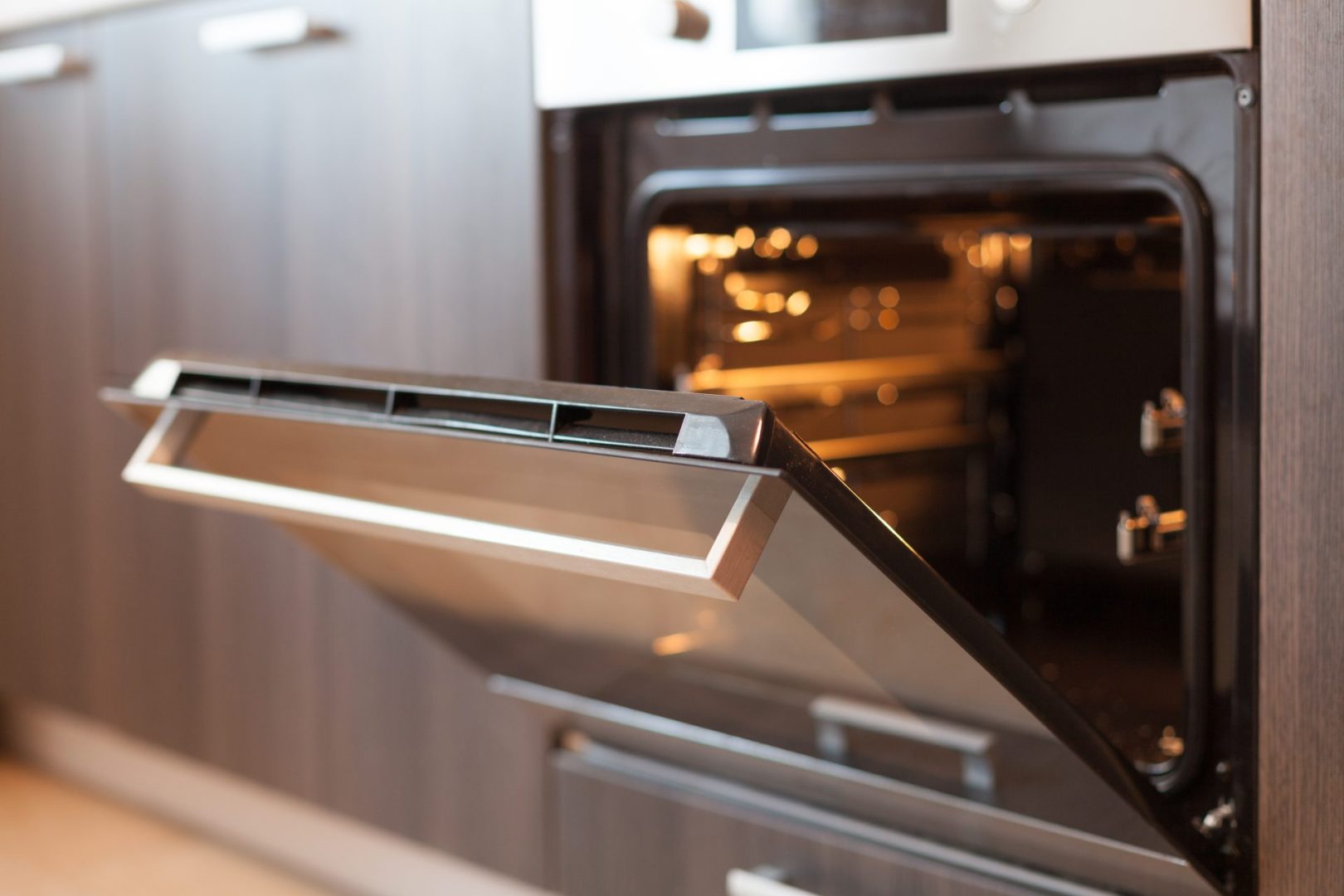From steaming bowls of soup to ice-cold smoothies, the temperature of our food does more than just please our palates—it triggers a complex series of physiological responses throughout our digestive system. While we often choose food temperatures based on preference, tradition, or convenience, these choices can significantly impact how our bodies process what we eat.
The science of food temperature reveals that our digestive systems respond differently to hot, cold, and room-temperature foods, affecting everything from initial enzyme activity to metabolic processes. Understanding these effects can help us make more informed dietary choices that support digestive comfort and efficiency.
First stop: how temperature affects your mouth
The digestive journey begins in your mouth, where food temperature immediately impacts both taste perception and the initial breakdown of carbohydrates.
Cold foods and beverages temporarily reduce the activity of salivary amylase, the enzyme responsible for beginning starch digestion. When you consume ice cream or chilled drinks, this enzyme works at a significantly slower pace until the food warms in your mouth. The effect is particularly pronounced with frozen items, which can reduce enzyme activity by up to 70 percent.
Temperature also affects taste perception in surprising ways. Cold temperatures slightly diminish our ability to detect sweetness and other flavors, which explains why ice cream manufacturers typically make their products sweeter than room-temperature desserts. The numbing effect of very cold foods can mask subtle flavor notes entirely.
In contrast, warm and hot foods tend to enhance certain flavor perceptions, particularly sweetness. They also stimulate increased salivary flow, which aids in both the mechanical and chemical breakdown of food. This additional saliva contains more digestive enzymes, potentially improving the initial digestive process.
Room-temperature foods represent a middle ground where enzyme activity functions well and taste perception remains optimal without requiring the body to adjust for temperature extremes.
The esophagus: a temperature-sensitive passageway
As food travels from your mouth to your stomach, it passes through the esophagus—a muscular tube sensitive to temperature variations.
Very cold foods can temporarily cause the esophagus to contract, sometimes resulting in the brief chest pain commonly called “brain freeze” or “ice cream headache.” This occurs when the cold temperature stimulates nerves in the esophagus and palate, triggering referred pain.
Hot beverages and foods can have the opposite effect, potentially relaxing the lower esophageal sphincter—the muscular valve that prevents stomach contents from flowing back up into the esophagus. This relaxation may temporarily increase the risk of acid reflux in susceptible individuals.
The ideal temperature for esophageal comfort and function tends to be close to body temperature or slightly below, allowing for smooth transit without triggering temperature-related responses.
The stomach’s temperature preferences
Your stomach serves as both a mixing vat and a chemical processing plant, where food is churned while being exposed to stomach acid and digestive enzymes. Temperature plays a significant role in how efficiently this process occurs.
Cold foods and beverages temporarily slow stomach emptying, meaning they remain in the stomach longer than warmer alternatives. This delayed emptying can create a sensation of fullness that lasts longer, which may benefit those trying to manage their appetite. However, this same effect can exacerbate conditions like gastroparesis, where stomach emptying is already compromised.
The primary digestive enzyme in your stomach, pepsin, works optimally at body temperature (around 37°C or 98.6°F). When you consume cold foods, your body must expend energy warming this food before optimal digestion can occur. This warming process can temporarily reduce enzyme activity until the food reaches appropriate temperatures.
Hot foods and beverages may slightly accelerate initial enzymatic reactions and can increase blood flow to the stomach, potentially enhancing digestive efficiency. However, extremely hot items can damage the gastric mucosa—the stomach’s protective lining—and should be avoided.
Room-temperature foods require minimal energy expenditure for temperature regulation, allowing digestive processes to proceed without the initial delay that accompanies very cold foods or the potential tissue stress from very hot ones.
Small intestine: where temperatures normalize
By the time food reaches your small intestine—where most nutrient absorption occurs—your body has largely regulated its temperature. Even foods consumed at extreme temperatures will have approached body temperature by this stage of digestion.
This temperature normalization is crucial because the pancreatic enzymes and bile that continue the digestive process in the small intestine function optimally at body temperature. Any remaining temperature differential is quickly resolved in this highly vascular organ.
While initial food temperature has minimal direct effect on nutrient absorption in the small intestine, the structural changes caused by temperature earlier in digestion can influence how readily nutrients become available. For example, certain cooked foods may offer more accessible nutrients than their raw, cold counterparts due to structural changes that occur during heating.
The small intestine efficiently extracts nutrients regardless of the food’s initial temperature, demonstrating the body’s remarkable ability to normalize conditions for optimal function.
The metabolic impact of food temperature
Beyond direct digestive effects, food temperature may influence metabolism—the process by which your body converts food into energy.
Cold foods and beverages require energy to warm them to body temperature. This energy expenditure represents part of the thermic effect of food (TEF)—the calories burned during digestion. Some research suggests that consuming cold water could increase energy expenditure by about 4-30 calories depending on volume, a modest but measurable effect.
Regular consumption of cold foods and beverages might also potentially stimulate brown adipose tissue (BAT)—specialized fat cells that generate heat. Once thought to exist only in infants, BAT has now been identified in adults, where it may play a role in calorie burning and metabolic health. However, the temperature exposure from cold foods alone provides a relatively minor stimulus compared to environmental cold exposure.
Hot foods and beverages might slightly reduce the immediate energy needed for warming food to body temperature, though this effect is minimal in the context of overall metabolism.
Cultural wisdom about food temperature
Traditional dietary practices around the world often include temperature-specific recommendations that align surprisingly well with modern physiological understanding.
Many cultures begin meals with warm soups or broths—a practice that makes physiological sense given that warm liquids can stimulate digestive secretions, increase blood flow to the digestive tract, and prepare the system for the coming meal. This tradition appears in cuisines ranging from French (with their clear soups) to Japanese (with miso soup) and Chinese (with various broths).
The Ayurvedic tradition recommends warm water with meals rather than cold beverages, reflecting the understanding that cold liquids may temporarily slow digestion and require energy to warm. Meanwhile, the common American practice of serving ice water with meals represents a relatively recent cultural tradition that prioritizes refreshment over digestive optimization.
Traditional Chinese medicine suggests avoiding extremely cold foods, particularly for those with “cold” constitutions or digestive weakness—advice that aligns with observations about the energy required to warm cold foods and their effects on digestive enzyme activity.
These cultural practices developed over centuries of observation, suggesting that traditional wisdom often contains physiological truths determined through experience rather than laboratory analysis.
Special digestive conditions and temperature considerations
For those with specific digestive conditions, food temperature takes on additional importance:
Individuals with gastroesophageal reflux disease (GERD) may find that very hot foods and beverages temporarily relax the lower esophageal sphincter, potentially worsening reflux symptoms. Extremely cold items might trigger chest pain that mimics heartburn in sensitive individuals. Moderate temperature foods typically prove safest for those managing GERD.
People with irritable bowel syndrome (IBS) may notice that cold foods trigger intestinal cramping, particularly in those with visceral hypersensitivity. Very hot foods might accelerate transit time, potentially exacerbating symptoms in those with diarrhea-predominant IBS. As with many aspects of IBS management, individual responses vary considerably, making personal observation crucial.
Those with gastroparesis—delayed stomach emptying—may benefit from avoiding cold foods and beverages, which can further slow gastric emptying. Warm, easily digestible foods might prove more comfortable and effective for managing this condition.
For all digestive conditions, extremes of temperature should generally be avoided, with moderate warmth often providing the most comfortable digestive experience.
Practical temperature strategies for better digestion
Understanding how food temperature affects digestion can help you develop practical strategies for optimal digestive comfort and efficiency:
Consider starting meals with warm appetizers like soup to stimulate digestive secretions before main courses. This traditional practice provides physiological benefits by increasing blood flow to the digestive tract and enhancing enzyme secretion.
Allow refrigerated foods to reach room temperature before eating when possible. This simple step improves both flavor perception and initial digestive efficiency by minimizing the energy needed to warm the food to a temperature where enzymes function optimally.
Choose beverage temperatures thoughtfully. While ice-cold drinks may feel refreshing, warm or room-temperature beverages support digestive enzyme activity more effectively. This doesn’t mean eliminating cold drinks entirely, but rather being mindful of when you consume them in relation to meals.
Consider seasonal adjustments to your diet. The tradition of eating warmer foods in winter and cooler options in summer aligns with the body’s natural temperature regulation needs, potentially reducing the energy required for thermoregulation and digestion.
Pay attention to morning digestive sensitivity. Many people experience enhanced digestive sensitivity in the morning, making warm breakfast options like oatmeal potentially more comfortable than cold cereals or smoothies for those with delicate digestive systems.
Notice your personal patterns. Individual responses to food temperature vary based on factors including overall health, digestive conditions, and even genetics. Observing your own comfort levels with different food temperatures can provide the most relevant guidance for your unique system.
The enzyme connection: temperature and digestive chemistry
The relationship between temperature and digestion largely comes down to enzyme function. Digestive enzymes—the proteins that break down food into absorbable nutrients—have specific temperature ranges where they work most effectively.
Salivary amylase, which begins carbohydrate digestion in the mouth, functions optimally at body temperature (approximately 37°C or 98.6°F). Its activity decreases significantly at temperatures below 20°C (68°F), becoming almost negligible in frozen foods until they warm in the mouth.
Pepsin, the primary protein-digesting enzyme in the stomach, works best between 37-42°C (98.6-107.6°F). When food enters the stomach at temperatures far below this range, pepsin activity remains suboptimal until the food warms.
Pancreatic enzymes, which continue digestion in the small intestine, similarly function best at body temperature. By the time food reaches the small intestine, however, the body has generally warmed it appropriately.
The remarkable adaptation capabilities of the digestive system mean that regardless of ingestion temperature, food is typically brought to appropriate temperatures for enzymatic activity fairly quickly. The main differences in digestive efficiency occur during the initial phases of digestion, before this temperature regulation is complete.
Extremely hot foods present a different challenge—enzymes can become denatured and lose function at high temperatures, typically above 45°C (113°F). However, foods hot enough to denature enzymes would generally cause tissue damage and pain if consumed, making this primarily a theoretical rather than practical concern.
Understanding this relationship between temperature and enzyme function explains why moderate food temperatures often support optimal digestion, while temperature extremes may temporarily reduce digestive efficiency before the body can normalize conditions.
The temperature of your food represents just one factor in the complex process of digestion, but it’s one we can easily modify to support digestive comfort and efficiency. By making thoughtful choices about when to enjoy hot, cold, or room-temperature foods and beverages, you can work with your body’s natural preferences rather than against them, potentially improving both digestive comfort and nutritional outcomes.
















